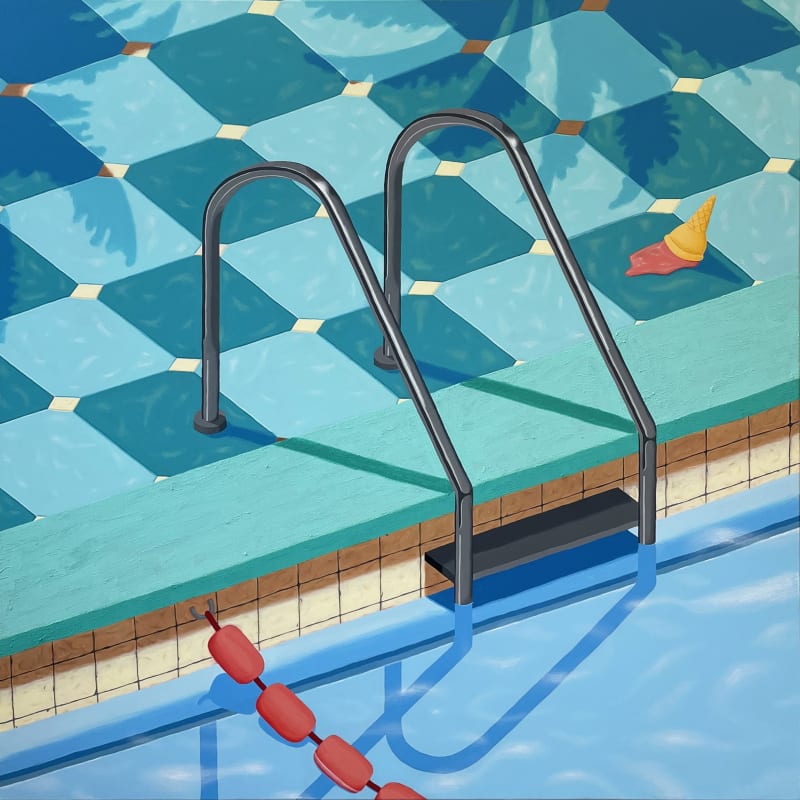Private View: Saturday 6th January 2024, 3-6pm
London (Wandsworth)
Growing up in the Netherlands in the 1980s, Keijzer has strong memories of time spent at swimming pools – of brightly coloured parasols, the smell of fried food and chlorine, the slipperiness of the metal steps, the roughness of the pool edges that scraped her elbows as she pulled herself on to the side, the scratchy texture of towels washed without softener, a feeling of total euphoria. ‘It was the freedom of childhood, but it was also a privileged time,’ she says, ‘Back then, people seemed unaware of environmental issues or the danger of skin cancer. They would rub olive oil on their skin and spend hours sitting in the sun.
'It was as if there was plenty of everything for everyone and forever.’ Keijzer’s paintings capture both the sensuous details of these memories through precise textures, such as the bobbly surface of a blue towel, and a blinkered perspective. The close crop and the flat, graphical style of the imagery creates an almost claustrophobic effect. This is perhaps most apparent in the painting of a water slide, where the bending curves of a pink and red striped flume fill up the canvas to leave only a small pocket of blue sky. In many ways, it is a joyful image – as if we are seeing through the eyes of a child craning their neck upwards and blinking into the sun, but at the same time, there is something vaguely ominous about the bulk of the slide and its’ never-ending form. In the painting of a pink water gun lying on the floor of a swimming pool, the zoomed-in perspective has a more startling effect. Water guns, as Keijzer, points out, are a very common poolside toy, but they are also replicas of a much more sinister object and yet this association is somehow forgotten or overlooked when children are chasing each other around screaming and shooting out jets of water.
The title of the exhibition Chloro Galore makes playful reference to this dilemma by associating the toxic substance of chlorine with the joyful feeling of abundance just as the intense colour palette of Keijzer’s paintings creates an alluring aesthetic while also highlighting the unreality of the world perspective that she is creating. Rather than offering any solutions to questions she poses, Keijzer invites us to simply reflect on the ways in which we view and pass judgement on the world.


